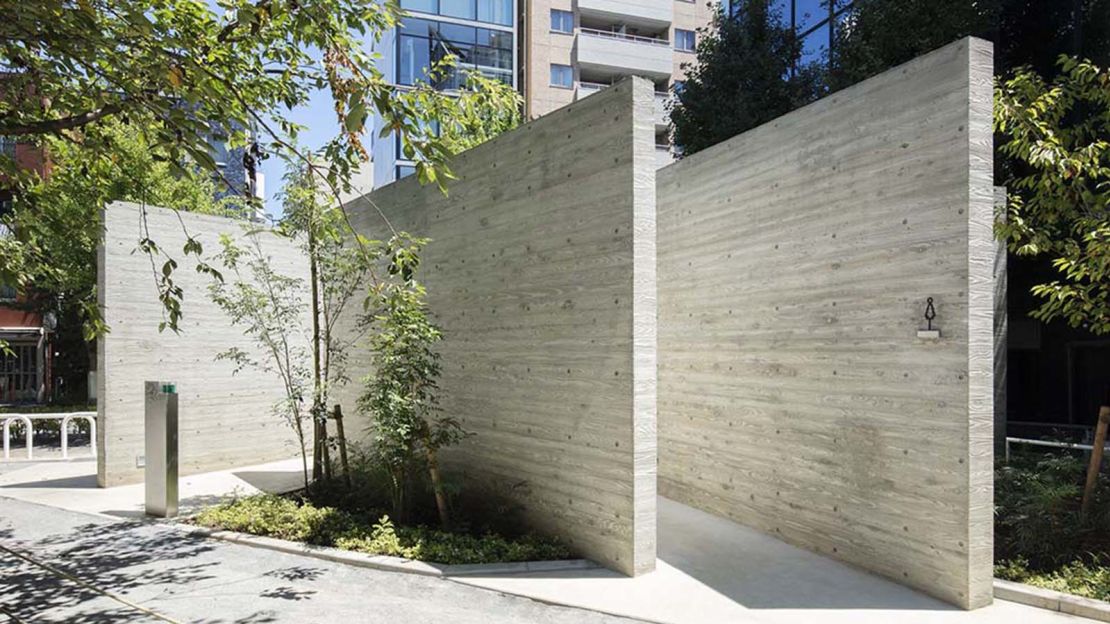One of Tokyo’s most popular districts has recently added some unusual new attractions: transparent public toilets.
Designed by Shigeru Ban Architects, the two new sets of see-through restrooms have been installed in Shibuya, the bustling city center famous for its busy pedestrian crossing.
Though the restrooms sound risqué, they’re actually part of an innovative project aimed at changing people’s perceptions of public toilets.
Designed by Shigeru Ban Architects, a Pritzker Prize-winning architecture firm, the two new sets of transparent toilets have been installed in two Shibuya parks – Yoyogi Fukamachi Mini Park and Haru-no-Ogawa Community Park.
“There are two things we worry about when entering a public restroom, especially those located at a park,” says a statement on the project’s official website, Tokyotoilet.jp. “The first is cleanliness, and the second is whether anyone is inside.”
Shigeru Ban Architects’ design tackles these two concerns by offering a toilet with glass walls that – at first – allows the public to see through from the outside. But once a user enters the toilet and locks the door, the walls turn opaque to provide privacy.
“This allows users to check the cleanliness and whether anyone is using the toilet from the outside,” says the statement. “At night, the facility lights up the park like a beautiful lantern.”
What’s it like to use one?
During CNN Travel’s visit to the Haru-no-Ogawa Community Park this week, a steady stream of visitors came to take photos of the new attraction.
The toilet facilities were impressively clean, a mix of gleaming white and chrome.
Part of the thrill is that once inside, you can’t tell if the glass is frosted or not. The walls between the compartments have mirrors installed, adding to the weird feeling of being on display.
This means it’s incredibly important remember to secure the door lock, which is located well below the handle.
During our visit, one person presumably did indeed forget to lock it, stirring laughter among those outside.
Both park facilities include a women’s toilet, a men’s toilet and a multi-use toilet.
More designer toilets coming
These two transparent toilet sets are a part of the newly launched Tokyo Toilet Project, a series of re-invented public toilet facilities.
Founded by the Nippon Foundation, a private, non-profit charity that focuses on social innovation, the Tokyo Toilet Project has partnered with some of the biggest names in the architecture and creative industries including Tadao Ando and Toyo Ito to create 17 new public toilet facilities around Shibuya.
The foundation will work with the Shibuya City government and the Shibuya City Tourism Association to maintain these new toilets.
The project was originally supposed to coincide with the postponed Tokyo 2020 Summer Olympics.
“When Japan succeeded to host the Olympic and Paralympic 2020, the word ‘omotenashi’ (a Japanese word that means to wholeheartedly look after guests) was repeatedly presented as the symbol of Japanese hospitailty,” Mihoko Ueki, project coordinator for the foundation’s social innovation team, tells CNN Travel.
“However, if you take a look at the public toilets, most of them are not accessible for everyone regardless of gender, age or disability. Considering that, we thought that we cannot show the guest from overseas ‘omotenashi’ as the symbol of Japanese hospitality,”
Toilets that show hospitality and inclusiveness
The 17 new toilets aim to break the stereotypes of public toilets – “that they are dark, dirty, smelly and scary” – and to be accessible for everyone “regardless of gender, age or disability, to demonstrate the possibilities of an inclusive society,” according to the Nippon Foundation’s news release.

Five facilities have been opened to the public so far, including the two see-through toilets.
The other three facilities include a “Modern Kawaya (river hut)” by FRAME Award-winning Masamichi Katayama and his interior design studio Wonderwall Inc. The design comprises 15 randomly placed concrete walls, inspired by the traditional design of a river-side toilet hut.
Fumihiko Maki, another Pritzker Prize-winning architect, created a “Squid Toilet” that sits inside a children’s playground known as the “Octopus Park.”
Designer Nao Tamura created an Origata (traditional Japanese decorative wrapping) inspired toilet that is aimed at raising awareness of the LGBTQ+ community.
Twelve more new public toilets are coming between August 31 and the summer of 2021.
All the facilities will be constructed by Daiwa House Group, the largest home-builder in Japan, with toilet equipment and layout advice provided by famed Japanese toilet manufacturer TOTO Ltd.






